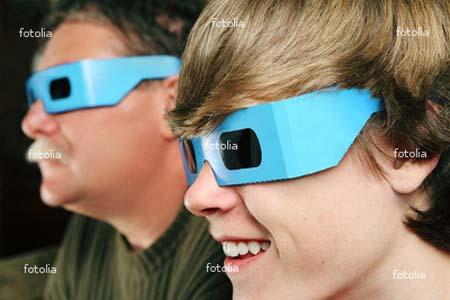3-D to make home appearance, but remain behind glasses
2010-04-19 08:51 BJT
TOKYO, April 16 (Xinhua) -- By the end of 2009, James Cameron's blockbuster Avatar, which combined 3-D technology and took 10 years to make, had become the highest-grossing film at the box office of all time, and was considered by many to have signaled the start of a new era for cinema. Japanese companies had been paying attention, and now attempts are being made to develop a 3-D experience that does not need glasses, but challenges remain.
 |
| With television stations and Hollywood already beginning to invest in fully developing 3-D entertainment, the opportunities to test out the new way of watching movies, sport and other programs are likely to increase. |
At a recent 3-D display exhibition in Tokyo, small companies that are supplying top of the range 3-D technology and services to major companies told Xinhua that they hope to see their goods and services having an impact on people's everyday lives within the next few years, as further investment in the technology forces prices down and makes the experience affordable for households.
Before that happens, however, there are still problems that need to be solved. For one, a display held by VMJ, a small company that supplies glasses-free 3-D technology to companies such as Sharp and Samsung, the 3-D displays were headache-inducing, even if they were impressive.
The technology developed by VMJ send different signals to each eye, creating the illusion of 3-D images, and Representative Kazuo Kaneyama, while arguing that future developments will lead to sharper images and less eye fatigue.
"In maybe five years, when the technology has further advanced and the price of the hardware has become more affordable, I think you will see 3-D sets in households," Kaneyama said.
A 65-inch set would currently set customers back around 3 million yen (32,000 dollars) - about three times more than the price of a 2-D television of around the same size. There are also problems for people with visual impairments. If one eye is stronger than the other, then the 3-D image will suffer.

 Mail
Mail Share
Share Print
Print


 Video
Video









 2009 China Central Television. All Rights Reserved
2009 China Central Television. All Rights Reserved